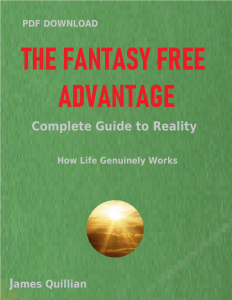 The truth about slavery begins by understanding that human DNA provides mankind with the propensity to enslave others. Nature makes us all economists to the degree we are all prone to getting our resources with the least amount of effort possible. It makes no sense that pre-civilization humans would opt to force others to do work for nothing and that we would otherwise do ourselves.
The truth about slavery begins by understanding that human DNA provides mankind with the propensity to enslave others. Nature makes us all economists to the degree we are all prone to getting our resources with the least amount of effort possible. It makes no sense that pre-civilization humans would opt to force others to do work for nothing and that we would otherwise do ourselves.
Let’s travel back to prehistoric times to get to slavery’s very beginning. First, which tribe occupied what territory, was established by belligerence. The first slaves were the foreign survivors of the wars from which tribal boundaries were determined. Somewhere along the line the Stockholm Syndrome evolved as a means of enhancing the survival prospects of slaves. Even in today’s world, the loyalties of human beings go to the most belligerent and dominate entities in society. Notice the high degree of patriotism in countries whose armies have killed the most in terms of populations of other countries.
Human to human slavery came before the enslavement of animals of other species. Animals were domesticated when they were needed as a means of doing things that humans were not all that good at. Dogs could sniff things out where humans could not. Dogs could find game more efficiently than humans. The result was, given the canine version of the Stockholm Syndrome, dogs began volunteering for slavery. In time, dogs took on an entertainment attribute. Human beings could not cover a lot of ground on foot in a short period of time. Horses were captured, enslaved and then domesticated. Horses are not vulnerable to extinction these days. Today, domesticated animals fare better with respect to survival than species which still exist in the wild.
Finally, early humans began enslaving one another and often doing the equivalent of domesticating them. Slavery became institutionalized rapidly. The morality of slavery was never questioned in any scriptures I have studied. Jesus did not start an abolitionist movement. Until laws prohibiting chattel slavery were enacted in countries experiencing an industrial revolution, slavery was always legal. In Southern states, free blacks could own slaves. Some did. In one case, a free black woman wanted to marry a man who was a slave. She bought him from his master. She was dissatisfied with him as a husband…. and sold him.
Chattel slavery was outlawed in Britain in 1820 and in the U.S, in 1865. This happened as the need for labor and manufacturing reduced the utility of slave ownership overall. It was cheaper to hire labor at starvation wages than it was to house and maintain slaves. Slaves are not naturally productive. Their owners had to whip them often to insure they were working hard enough. It made no sense to whip factory workers.
After slavery ended, Britain doubled down on its imperialistic efforts. The United States began its imperialistic endeavors with the Spanish – American War in 1898. Countries where chattel slavery had recently been deemed illegal began enslaving entire foreign countries. albeit, not chattel slavery. It was a way of getting human capital at less than it would cost in a free market. It did constitute forced labor. In the 1980s, the Reagan Administration invaded Nicaragua and returned that population to being slaves of the United Fruit Company.
With the advent of the first Gulf War, the United States began a round of invading countries under the pretense of righteousness, securing their resources and ensuring their availability and low cost to American global corporations.
Chattel slavery is gone from the rest of the world but the propensity to enslave is still with us.
.
Views: 46

